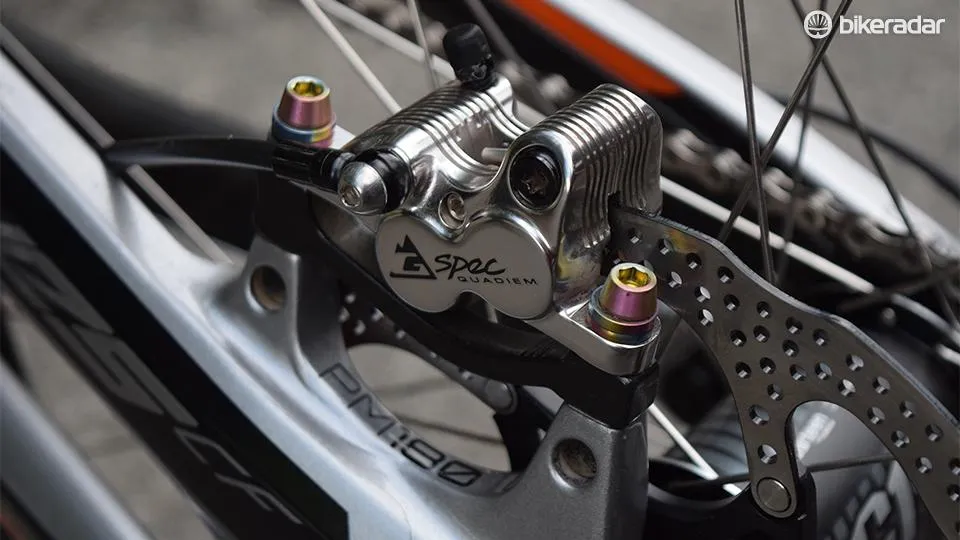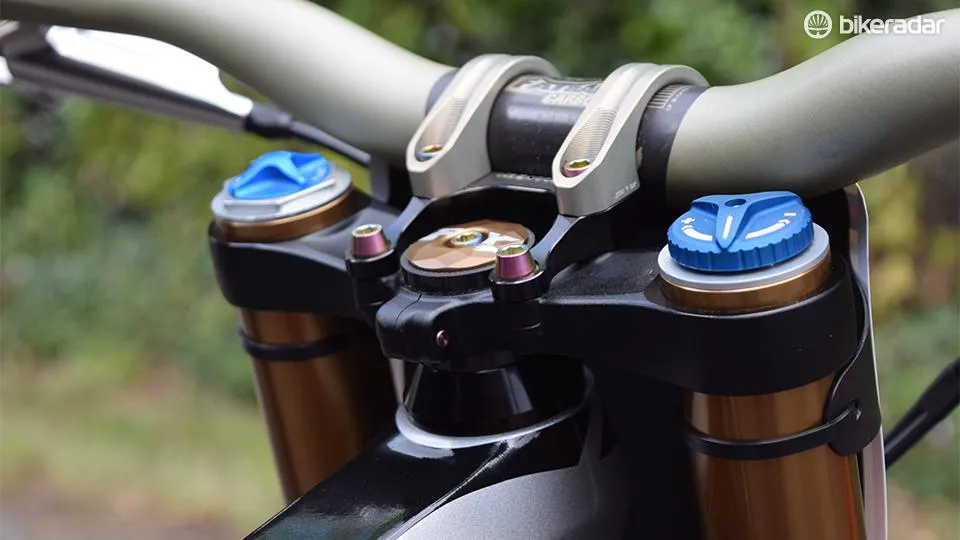As he begins his title defence here in Lourdes, let’s take a look at the reigning Downhill World Cup champ’s weapon of choice.
Aaron Gwin is the man to beat at the first round of the 2017 Downhill World Cup, having won the overall title in 2016, as well as the opening round that year — which was also held in Lourdes. Now starting his second season riding for the YT mob, Gwin’s bike setup has been refined and honed.
We talked to Gwin's mechanic, John Hall, to find out the details designed to help Gwin win.
How hard?
Gwin is known for his rock hard suspension, but just how hard is it? When asked about air pressure and volume spacers in his Fox 40, Hall was saying nothing, but when I pushed down on the bars to test the firmness of the fork, (as you do) the spring rate didn’t feel super-human solid. In fact, it felt like it had been set up for a relatively normal person. Maybe Gwin is human after all.
Of course, this says nothing of the end-stroke progression or damping support of the fork. Speaking of which, the 40’s compression adjuster was a single dial, rather than the high and low speed adjustments usually seen on Fox 40 forks.
This prototype damper is part of Fox’s RAD (Racing Applications Development) programme and Hall says Gwin prefers the feel of this prototype damper.
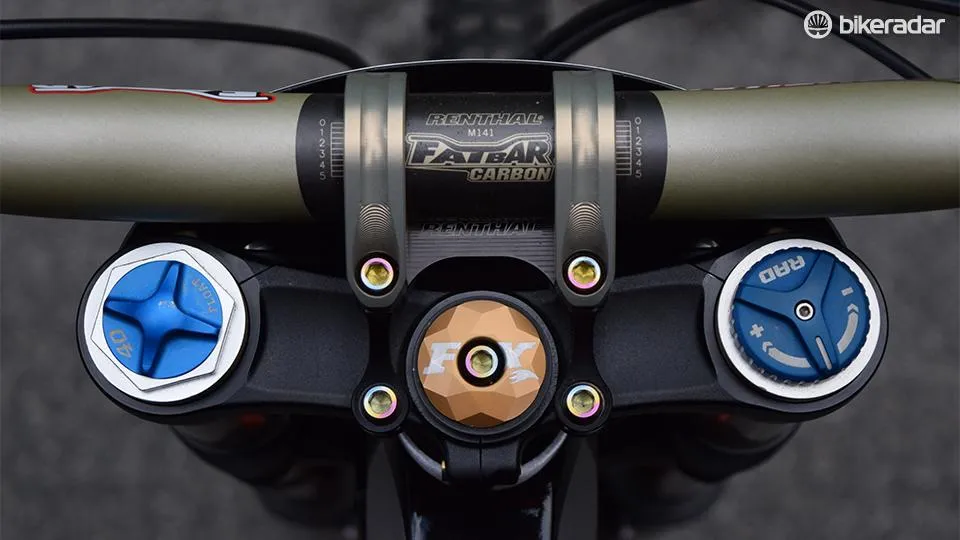
Out back, Gwin is running a Fox DHX2 coil shock, a change from the air-sprung version he raced on last year. Hall explained that the main reason for this was that Gwin marginally preferred the feel of the coil spring, saying it “sat into its travel a little better” due to the softer initial spring rate.
Speaking of shocks, Hall explained that, with the help of Fox, they had experimented with different internal valving and oil weights in the X2 shock to arrive at a base setting which was roughly in the middle of the external damping adjustment range. This leaves the maximum range of adjustment either side of the base tune to suit specific courses.
The YT Tues is very much on the progressive side in terms of its leverage rate, but Gwin was running a surprisingly light 375 pound per inch spring. Hall says Gwin likes his fork to feel balanced against the shock, so this could explain why the fork doesn’t feel overly stiff off the top.
Hall did say that Gwin often ups the pressure in his fork as a race weekend progresses, allowing him to attack the course harder and faster as he builds in confidence.
Taking stock
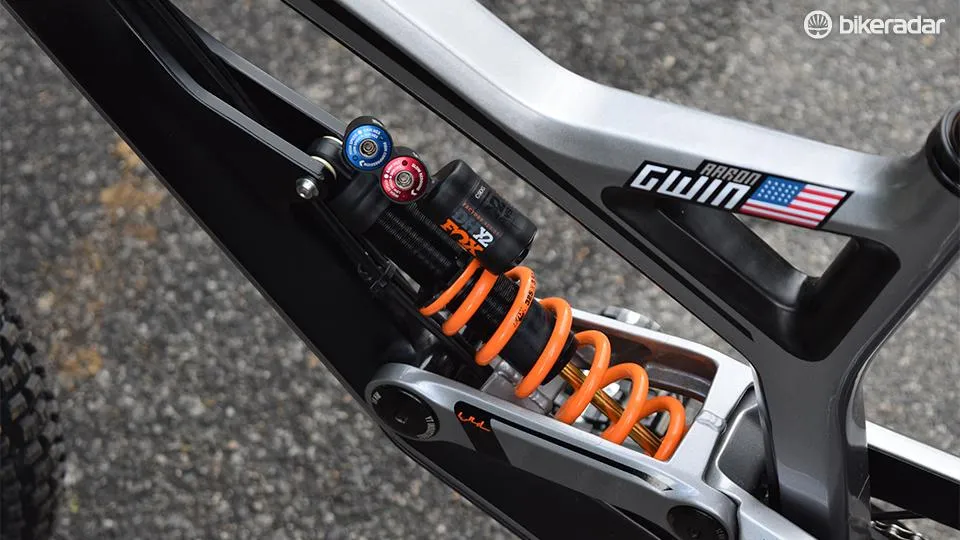
Gwin is apparently running a stock XL Tues CF frame with wheels built and tensioned in house by E*13 (no super-loose spokes here) and a pair of Onza’s new Aquila tires, which were developed with input from Gwin himself. The rear tire uses the Flat Tire Defender system to keep punctures at bay.
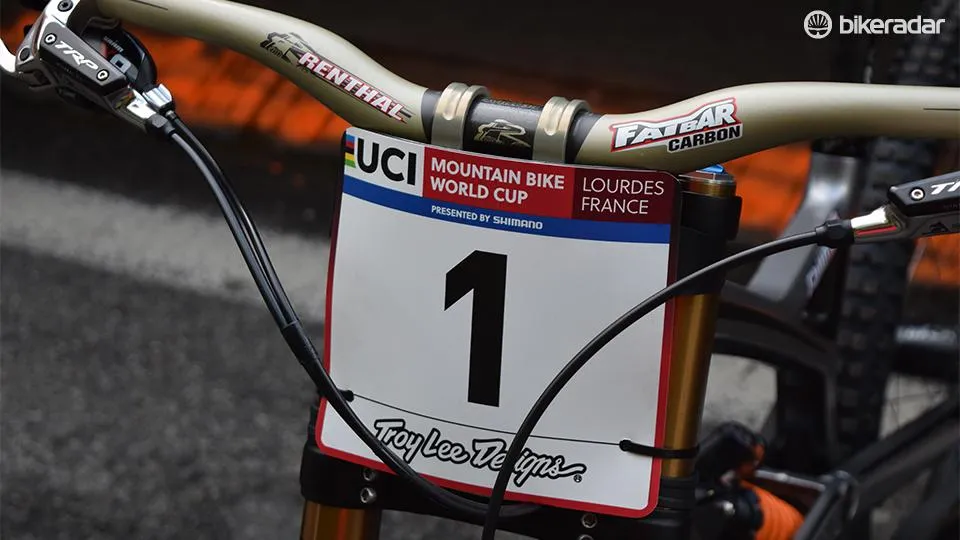
Gwin's running a 30mm rise Renthal Fatbar carbon cut down to 785mm, teamed with a 50mm stem. Braking duties are handled by TRP’s G-spec brakes, which are now in production.
This being a multiple World Cup champ’s bike, most of the bolts are titanium for extra lightness, but apart from that (and the custom dampers), it’s pretty much a stock bike.
